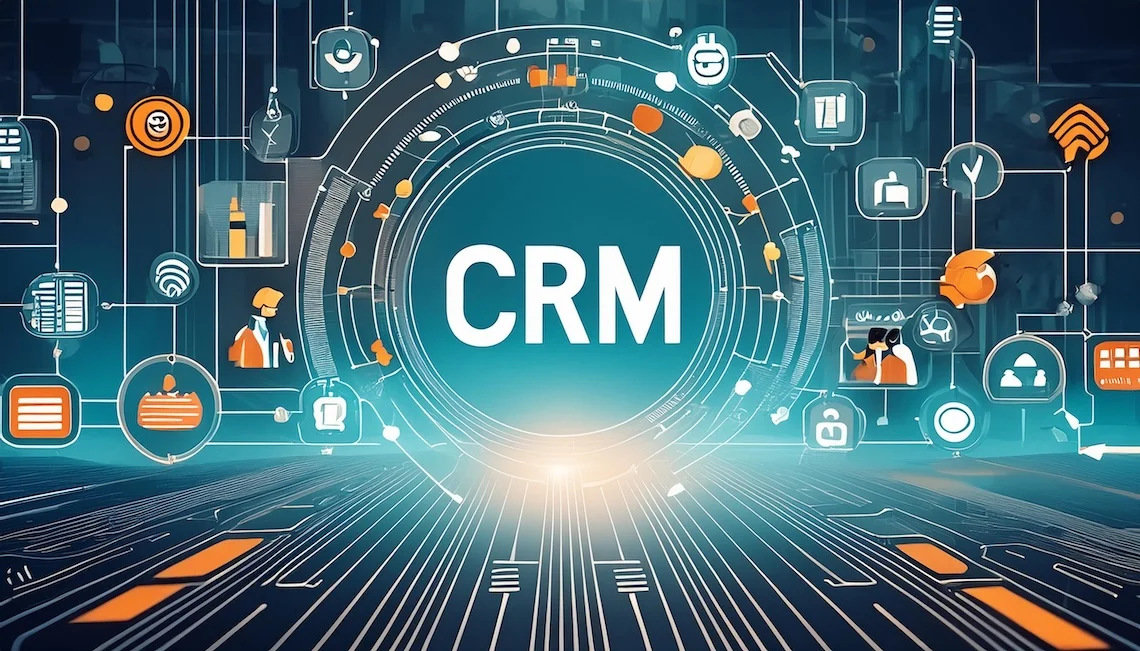

CRM software – an acronym for Customer Relationship Management – is a solution that allows you to coordinate and manage every digital interaction between a company and its customers, whether current or potential.
CRM software will enable companies and their teams to manage each user’s relationship, simplify work and interaction processes, and improve profitability.
Is it helpful for your work? If you are a structured or growing company, I think so.
Today, a CRM is much more than a simple contact database and is NOT a management system.
The first step in choosing the right CRM program and understanding whether it can benefit your company is to analyze the current situation.
Try to understand with your collaborators/colleagues or the help of a consultancy agency with:
Having assessed the situation and understanding that CRM software is a valuable and current choice, the next step is to analyze the CRM platforms on the market and search for the most needed features.
Here is a summary of some of the functions that your following CRM software must have:
Implementing training is the phase that completes the choice of using CRM software. A project plan with clear milestones and tasks is necessary to achieve an optimal result in the expected time.
CRM software almost always has a knowledge base, video tutorials, and support communities. Still, the partner supplier must know how to guide the specific teams (marketing, sales, customer service) using the platform based on their needs, respecting the learning times and the adoption curve.
CRM software is traditionally a product designed and dedicated to sales. Still, today, it is no longer possible to think in silos: it has become essential to extend the operational relationship between teams with different functions.
Sales teams can access a database of contacts that is always up-to-date, and in order, they can capture signals of readiness to purchase from some prospects, they can automate a large part of their commercial actions, access sales content at any time, produce offer documents and manage their entire pipeline.
Marketing teams can manage the entire prospecting process and have a clear view of each lead. They can trace the customer journey from the first point of contact to the signing of a contract or offer, with a much clearer understanding of the effectiveness of marketing actions and tactics.
Customer service teams can insert themselves into conversations by productively solving any possible problem, managing customer requests in cross-channel mode and contributing to other offices’ information with all the data derived from customer service.
The human resources office can also benefit from the presence of CRM software in the company. They may automate the hiring processes, approach the best candidates, and build employer branding initiatives.
Let’s first clarify the terms: when we talk about an on-premise infrastructure, we mean that the data, applications, software, and hardware are within the company perimeter and are managed internally by IT personnel.
It is therefore necessary to equip oneself with robust, high-performance, reliable and secure servers, competent IT people ready to intervene, and the resource capacity to constantly develop and improve the infrastructure.
The advantages are the high level of customization. The disadvantages are the costs and the enormous difficulties of staying up to date with the features.
When I refer to a cloud infrastructure, I mean that the data, applications, and software are located on a perimeter external to the company. Therefore, these are usually software developed by specialized companies, constantly updated and on servers with high levels of security and performance.
The advantage is the enormous availability of functions, constant updating, security of the servers, quality of service, and costs (definitely more accessible than a custom project). The only disadvantage is the lack of extreme customization (having said that, everything can be developed and integrated with CRMs).
CRM software – an acronym for Customer Relationship Management – is a solution that allows you to coordinate and manage every digital interaction between a company and its customers, whether current or potential.
CRM software will enable companies and their teams to manage each user’s relationship, simplify work and interaction processes, and improve profitability.
Is it helpful for your work? If you are a structured or growing company, I think so.
Today, a CRM is much more than a simple contact database and is NOT a management system.
The first step in choosing the right CRM program and understanding whether it can benefit your company is to analyze the current situation.
Try to understand with your collaborators/colleagues or the help of a consultancy agency with:
Having assessed the situation and understanding that CRM software is a valuable and current choice, the next step is to analyze the CRM platforms on the market and search for the most needed features.
Here is a summary of some of the functions that your following CRM software must have:
Implementing training is the phase that completes the choice of using CRM software. A project plan with clear milestones and tasks is necessary to achieve an optimal result in the expected time.
CRM software almost always has a knowledge base, video tutorials, and support communities. Still, the partner supplier must know how to guide the specific teams (marketing, sales, customer service) using the platform based on their needs, respecting the learning times and the adoption curve.
CRM software is traditionally a product designed and dedicated to sales. Still, today, it is no longer possible to think in silos: it has become essential to extend the operational relationship between teams with different functions.
Sales teams can access a database of contacts that is always up-to-date, and in order, they can capture signals of readiness to purchase from some prospects, they can automate a large part of their commercial actions, access sales content at any time, produce offer documents and manage their entire pipeline.
Marketing teams can manage the entire prospecting process and have a clear view of each lead. They can trace the customer journey from the first point of contact to the signing of a contract or offer, with a much clearer understanding of the effectiveness of marketing actions and tactics.
Customer service teams can insert themselves into conversations by productively solving any possible problem, managing customer requests in cross-channel mode and contributing to other offices’ information with all the data derived from customer service.
The human resources office can also benefit from the presence of CRM software in the company. They may automate the hiring processes, approach the best candidates, and build employer branding initiatives.
Let’s first clarify the terms: when we talk about an on-premise infrastructure, we mean that the data, applications, software, and hardware are within the company perimeter and are managed internally by IT personnel.
It is therefore necessary to equip oneself with robust, high-performance, reliable and secure servers, competent IT people ready to intervene, and the resource capacity to constantly develop and improve the infrastructure.
The advantages are the high level of customization. The disadvantages are the costs and the enormous difficulties of staying up to date with the features.
When I refer to a cloud infrastructure, I mean that the data, applications, and software are located on a perimeter external to the company. Therefore, these are usually software developed by specialized companies, constantly updated and on servers with high levels of security and performance.
The advantage is the enormous availability of functions, constant updating, security of the servers, quality of service, and costs (definitely more accessible than a custom project). The only disadvantage is the lack of extreme customization (having said that, everything can be developed and integrated with CRMs).

